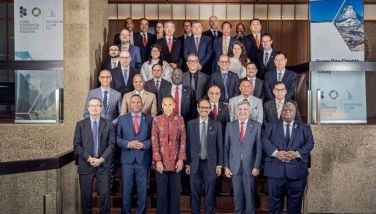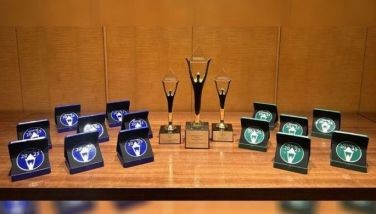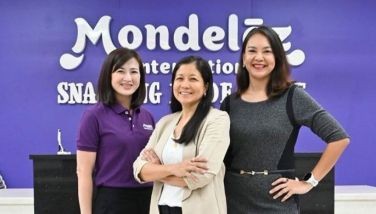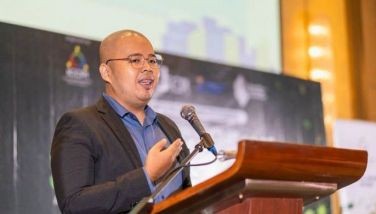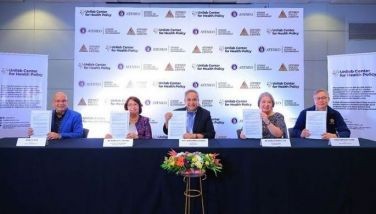The impact of the CLLSD in Southeast Asia
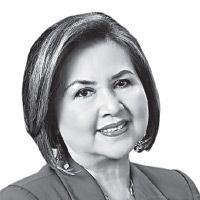
Three important workshops and consultations took place in Manila regarding the establishment of the Southeast Asian Center for Lifelong Learning for Sustainable Development (SEACLLSD). The proposal by the Philippines for the SEACLLSD to be a Category 2 Center under the auspices of UNESCO was submitted to the Paris headquarters during the 2005 General Conference.
The SEA countries were represented by their UNESCO Secretaries General or their deputies, twice in the presence of Mr. Derek Elias, the ESD Coordinator of Asia and the Pacific. Visits to the CLLSD National Laboratory allowed them to see how ESD works for teacher training, as well as the curriculum program for students from preschool, elementary school and professional high school to teacher training college.
Eight Southeast Asian countries including Brunei, Cambodia, Indonesia, Lao PDR, Malaysia, Timor Leste and Vietnam, with the Philippines, has just concluded the final consultation meeting. Together, we came up with a consensus regarding the Vision, Mission, Objectives and Functions of the Center, as well as the Needs, Strengths and Impact of the CLLSD on the Southeast Asian sub-region. They all agreed that there was a need for the Center and that there was a great chance that the CLLSD will be approved by UNESCO Paris.
The vision of the SEACLLSD
The SEACLLSD envisions the “new man” (human being) who has been empowered by quality Education and Lifelong Learning for Sustainable Development to conserve life on Planet Earth.
Within the human being is a “secret teacher” invisible to many until a century ago, when Dottoressa Maria Montessori made a scientific discovery of the “new child” and the “new teacher”. In her book, Education for Life, Dr. Montessori stated:
“We teachers can only help the work going on, as servants wait upon a master. We then become witnesses to the development of the human soul, the emergence of the new man, who will no longer be the victim of events but thanks to his clarity of vision, will become able to direct and mold the future of mankind.”
The Center looks at life lasting a hundred years divided into four: from birth to 25 years is the Formative period; 25 to 50 is when a person acquires a career and masters it; from 50 to 75, as an expert, the person mentors others; and finally from 75 to 100, the person leaves a legacy.
ESD from preschool to high school matches UNESCO’s 21st century education
The Formative Period matches the UNESCO 21st Century Education and its four Pillars of learning, which take place with self-sustaining energy from infancy to adolescence. Pillar I: “Learning to Be” points to the national energy of infants from birth to six years when the child is “called to independence” in speech and movement. By three, he can be scholastically directed to care for himself and his environment, while learning Language, Math and Science with hands-on materials. By six, the child would have acquired the competency of a third grader.
Pillar II: “Learning to Learn”, from six to 12, is characterized by an enormous reasoning power and moral plenty. Between 9 to 12, the grade schooler is capable of acquiring high school competencies in all academic subjects, two years in advance of his/her counterpart in traditional schools. Pillar III: “Learning to Work” – the 12 to 18-year old adolescent students, whose intelligence wanes by this period, are naturally talented to learn skills for economic independence and performing arts. Pillar IV: “Learning to Live Together in Harmony”, by 18 to 24-year old, these young adults start a career.
The mission, objectives and functions of the center
The SEACLLSD’s Mission is to be an LLSD service provider, a standard setter, and a research and resource information management center in the Southeast Asian sub-region.
With the Vision and Mission in mind, the Center’s objectives are to: 1) Provide LLSD human capacity building; 2) Promote the LLSD curriculum and its implementation; 3) Encourage the development of a research-based alternative LLSD curricula and training modules for implementation; 4) Develop an LLSD resource management system; and 5) Provide consultative services, linkages, partnerships, networks and collaboration ventures in the SEA region.
The functions of the Center are to: 1) Develop and implement training programs to serve the various LLSD clientele in the community; 2) Disseminate LLSD curriculum to, and encourage collaboration among, the various educational institutions in different levels; 3) Conduct research, develop and determine the viability of an alternative LLSD curricula and training modules for various clientele; and 4) Be a platform and database for sub-regional cooperation for the transfer and sharing of knowledge, skills, information, performance indicators and best practices in the field of Education for Sustainable Development (ESD); and 5) Organize advocacy workshops, seminars, programs and other related activities and encourage collaboration among the Southeast Asian countries for the promotion of education and LLSD.
What SEA countries need from the SEACLLSD
During the final consultation meeting, the discussion focused on the strengths and needs of each of the Southeast Asian countries, as well as the impact of the SEACLLSD on their respective countries.
After watching the students in the CLLSD National Laboratory, almost all of the Southeast Asian representatives were struck with the unique character of the preschoolers, both in the formal Montessori setup and the non-formal Pagsasarili preschool class demonstration of the children from the West Crame laborers’ district. Both classes were working systematically, getting things done instead of playing. They behaved in the same way: focused in their work, organized in laying out the materials and yet each had a different apparatus. No one grabbed or demanded someone else’s work. The teacher was not even noticeable. Since most of the class was occupied, she could attend to the younger children and the advanced students.
Brunei’s Dr. Supry Ladi (Director, Institut Teknologi Brunei) observed, “In Brunei, we have institutionalized ECE in our educational ladder, but we need your special Pagsasarili preschool or ‘mandiri’ (self-help) system to enhance this.” This was echoed by Vietnam calling it du nang luc, Cambodian ESD focal point Prof. Meakh Sary (choury klourn eng), Lao PDR (koum ton eng), Timor Leste (sozinho), Indonesia and Malaysia (mandiri).
A better grasp of English
Since Bahasa is the medium of teaching for Indonesia, Malaysia and Brunei, their teachers and students’ grasp of English has weakened. Together with French-speaking Cambodia, Laos and Vietnam, including Thailand, they are eager to have their teachers’ command of English intensified.
Almost all of the SEA representatives are concerned with the low literacy rates in the villages, especially among women. Dr. Pham Quang Tho (Vietnamese Deputy Secretary General) believes Vietnam could be helped greatly and wants to adapt the Pagsasarili Mothercraft functional literacy course. They all believe that its Personal Grooming and Hygiene, Good Housekeeping, Child Care and Cooking, which is convertible to backyard business will augment the family income of their country folks.
Although Brunei excels in voc-tech training, Mr. Ibrahim Abd Rahman (Assistant Director, Department of Technical Education, Brunei) believes the Philippines could help strengthen their small and medium entrepreneurship programs. Malaysia’s Ms. Norlaila Kuslan (Assistant Director, Educational Planning and Research Division) is eager to learn our “multi-grade” strategies. Lao PDR NatCom Deputy Secretary General Ms. Chandeng Siripaphanh needs to have training using electronic media as a Lifelong Learning tool to reach people in their mountainous regions.
Indonesia’s Ms. Ratna Sinaga (NatCom Chief of Education) stated that the Center could help improve the quality of education of their country, specially teacher certification and standardization. Timor Leste NatCom Secretary General Mr. Apolinario Magno says that having just acquired independence, after a lengthy war, their country needs all what CLLSD can offer as they are in the middle of reconstructing their educational system.
In search of education that sustains life from cradle to grave
Everyone agreed that the Asian countries have so much in common. To achieve the UN Millennium Development Goal, Mr. Tho of Vietnam said that the CLLSD’s specific services are very valuable to strengthen sustainability of the Asian region. This was reiterated by Ms. Sinaga of Indonesia who proudly stated that the Center could help in the fulfillment of the targets of EFA and the MDGs by 2015.
Once approved by Paris to be a Category 2 Center under the auspices of UNESCO, the SEACLLSD will be the only Center focusing on the ESD spirit, at the moment starting with the Southeast Asian region, but may later include the Asia Pacific region.
(For more information or reaction, please email at pssoliven@yahoo.com)
- Latest
- Trending









